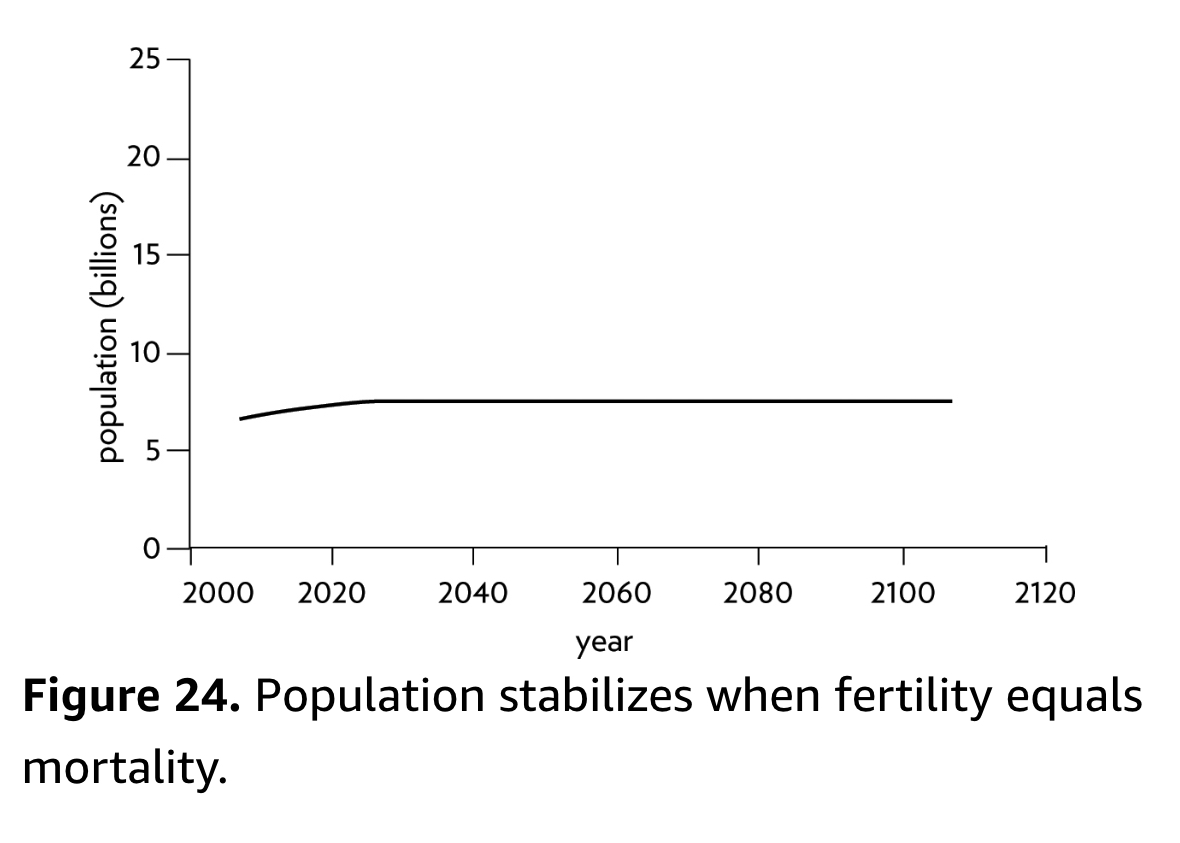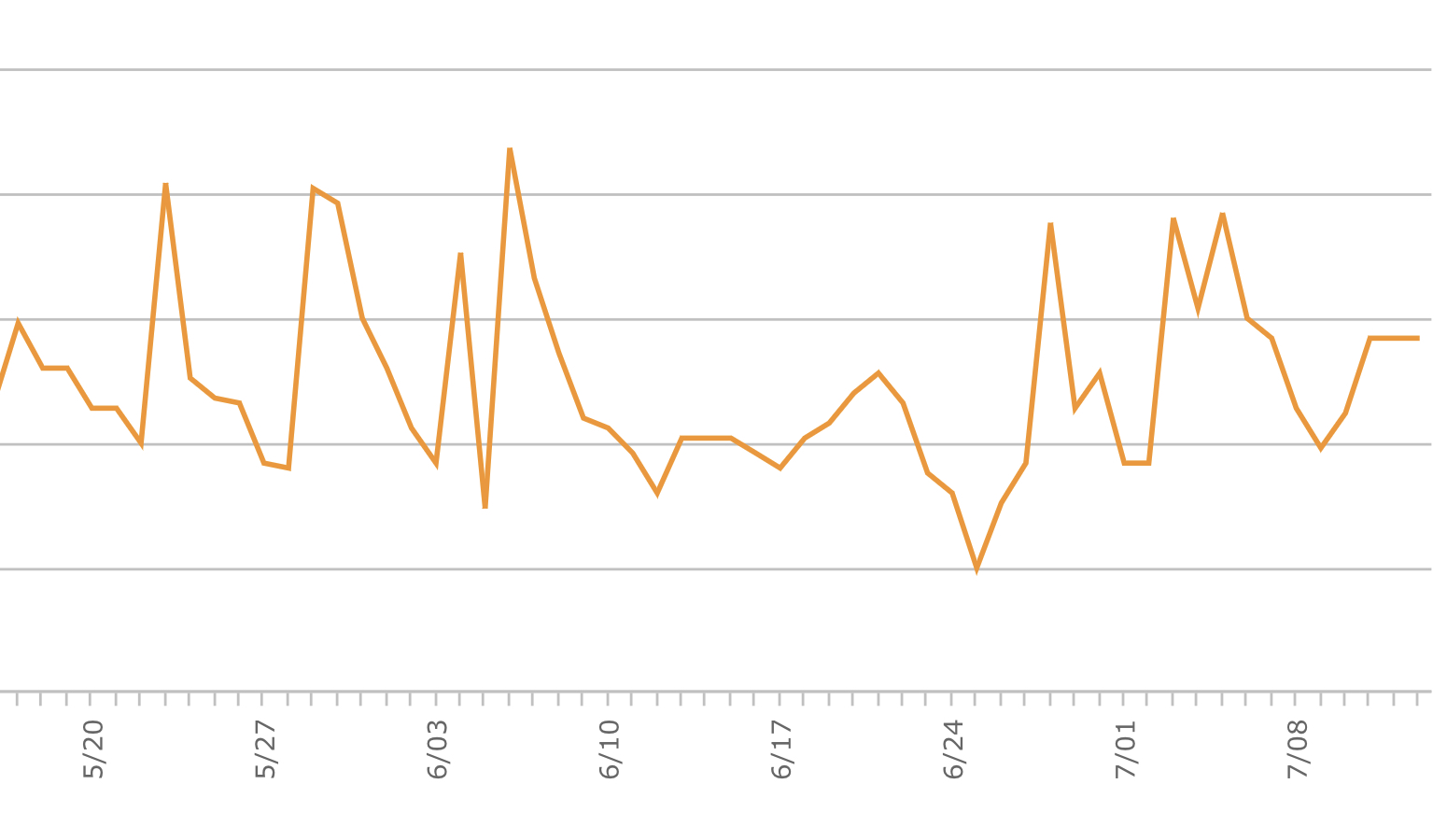Fast-Tracking Progress With a Quarterly Review, Part 3: Stabilization

Better Questions is supported by readers like you. If you get value from my writing, consider becoming a supporting member. Exclusive content, weekly deep-dives, free beta-access to future courses and more. Thanks.
----
So far in our series on quarterly reviews, we’ve discussed proximal and distal causes….
(The root cause of our issues may not be what it appears)
…and the importance of Feedback…
(Reinforcing feedback loops propel massive change, very quickly).
But, at the end of the last email, I told you there was a catch.
Rapid growth does not continue forver.
Let’s explore why.
——
What’s the feedback loop people have the most experience with?
The thermostat.
The thermostat isn’t a reinforcing feedback loop like the ones I discussed in the last email (a feedback loop that drives the output higher and higher, as when the money in your bank account accrues interest, which means you have more money, which means you generate more interest, etc)…
A thermostat is a balancing feedback loop.
Rather than trying to drive the out put up and up, a balancing feedback loop tries to keep the output stable.
Say you set your thermostat to 70 degrees.
During the course of the day, the temperate in the house rises slightly as the outside air warms up.
What happens?
The thermostat measures the temperature in the house, compares it against its ideal situation (70 degrees) and realizes there’s a deviation.
It then adjusts output in order to bring the temperature back in line. In this case, maybe the air conditioners kick on in order to cool the air inside the house.
A few minutes later, the thermostat measures the temperature in the house again, and finds that the temperature is now 68 degrees.
We’ve gone too far in the other direction!
The thermostat turns the A/C off, turns on the heat, and attempts to bring the temperature back up to 70 degrees.
And on, and on, and on, all throughout the day.
This is a stabilizing feedback loop: output goes too high, we bring it down. Output goes too low, we bring it up.
Thermostats are man-made, but stabilizing feedback loops are everywhere in nature as well…often, in conjunction with reinforcing feedback loops.
Take birth rates, for example.
Imagine an environment with lots of resources and few predators. In this kind of lush and welcoming environment, birth rates could be expected to rise.
Birth rates going up means more people, which means more mating opportunities, which means higher birth rates…it’s a reinforcing feedback loop!
If we plot this behavior on a graph, it might look like this:

Does this reinforcing feedback loop run forever?
No.
Why not?
Because a stabilizing feedback loop kicks in.
Rising birth rates means more people, but at some point, there are too many people.
All those abundant resources become less abundant. Over-harvesting depletes the soil, which produces weaker harvests. Animal stocks get hunted to extinction.
There’s less food to go around, and people start to argue over who “owns” which parts of the landscape. Perhaps warfare breaks out as people struggle to control what resources remain. Deaths, wether caused by starvation or violence, shoot up.
All of these factors begin to put downward pressure on population size in the exact same way that the thermostat puts downward pressure on the temperature in a house. Sooner or later, population drifts down to a place where it can stabilize, and the interplay between rising birth rates and declining resources keeps everything more or less in check.
People do well, birth rates tick up.
Birth rates tick up, resources dwindle.
Resources dwindle, birth rates tick down.
If you could plot all this on a graph, it might look like this:

In our last email, I said that all massive success has, at it’s heart, a reinforcing feedback loop.
Here’s the catch:
Whenever rapid growth occurs, stabilizing feedback loops kick in to even things out.
Let me give you an example from my own life.
When the pandemic got started, I decided to use it as an opportunity to lose some weight.
I tend to be an emotional eater, and I wanted to work on some healthy habits to counteract that tendency.
Here’s a chart of my weight from April through May:

Why the drop? I started cutting calories. My daily intake went from around 2000 calories to 1600. I ate less, and despite some daily ups and downs, the general trend line shows a relatively smooth drop in weight.
Now, let’s look at my weight from May through till Today:

That relatively smooth drop in weight is completely gone, replaced by jagged peaks and sharp valleys. Progress has stalled, and there’s lots of variability.
Why?
Because a stabilizing feedback loop kicked in.
I lost weight because I was eating less than my body needed. That caused it to tap into my reserve stores of energy - to burn fat.
The more fat I burned, the better I looked - and the more motivated I was to burn fat. This is a reinforcing feedback loop - so far so good.
But I’d actually been losing weight fairly steadily for several months before April. I was leaner than I’d ever been, and so I didn’t have that many fat stores left to burn. My body’s resources were dwindling.
It turns out that the body doesn’t like that feeling very much, and so a number of sophisticated stabilizing systems kicked in:
The less I ate, the more ghrellin - a hormone that stimulates feelings of hunger - was produced.
The more ghrellin that was produced, the hungrier I got.
The hungrier I got, the more I thought about food.
The more I thought about food, the more I wanted to eat foods that weren’t in my diet plan.
The more I wanted to eat foods that weren’t in my diet plan, the more willpower I had to use to stay on plan.
The more willpower I had to use, the less willpower I had to resist the urge to eat.
And so:
The less I ate…
The more I wanted to eat…
And the less energy I had to resist those urges...
So I ended up eating off plan (One two occasions, eating more than 7,000 calories in a single day!)
When I ate, my weight spiked up. I could see the impact immediately the next day.
So, of course, I vowed to get back on plan and restricted my calories...
which made me hungry...
which made me want to eat...
which sapped my willpower…
And we’re right back where we started.
The idea here is NOT that it’s impossible to lose weight (I’m down 20 lbs. this year and look better than I ever have)…
It’s that we need to understand that rapid growth in any area will often trigger a stabilizing feedback loop that will slow our progress.
Start making a bunch of money? Your friends may start to judge and shame you for “changing.”
Lifting weights every day? It gets harder and harder to add more muscle as you grow.
Improving your mindset and attitude every day? The people you used to hang out with feel uncomfortable and stop inviting you out.
This pattern - reinforcing feedback loop drives rapid growth, following by a stabilizing feedback loop slowing that growth to a crawl - is natural. Not only natural, it’s virtually inevitable!
The key is to be aware of it. To expect it, to welcome it as a sign that you’re on the right path (after all, if you weren’t making progress, you wouldn’t need to stabilize!)
When we find our progress leveling off, the key is to uncover, analyze, and work with the stabilizing feedback loops in our lives.
We can manipulate the way the system works to allow us to continue growing.
We can change our goals to allow for a more gradual progression. Or, we can decide we’re happy with where we’re at, and simply set our “thermostat” to keep us there.
(This is what happened with my weight, by the way. I love how I look, and I don’t need to keep up the restrictive dieting. I can eat a lot more, enjoy my life and simply maintain my current weight, which is exactly what I plan to do).
What we should NOT do is beat ourself up because we aren’t maintaining our previous rate of progress, or think that we’re suddenly “failures” because our situation is different now than it was at the beginning.
The next time you find yourself starting to beat yourself up because your progress is slowing down, remember thermostats, birth rates, and weight loss…
And work with - rather than against - the feedback loops in your own life.
Next week, we’re getting into the nitty-gritty - exactly how I perform my quarterly review.
See you then.
Dan
Better Questions Newsletter
Join the newsletter to receive the latest updates in your inbox.
